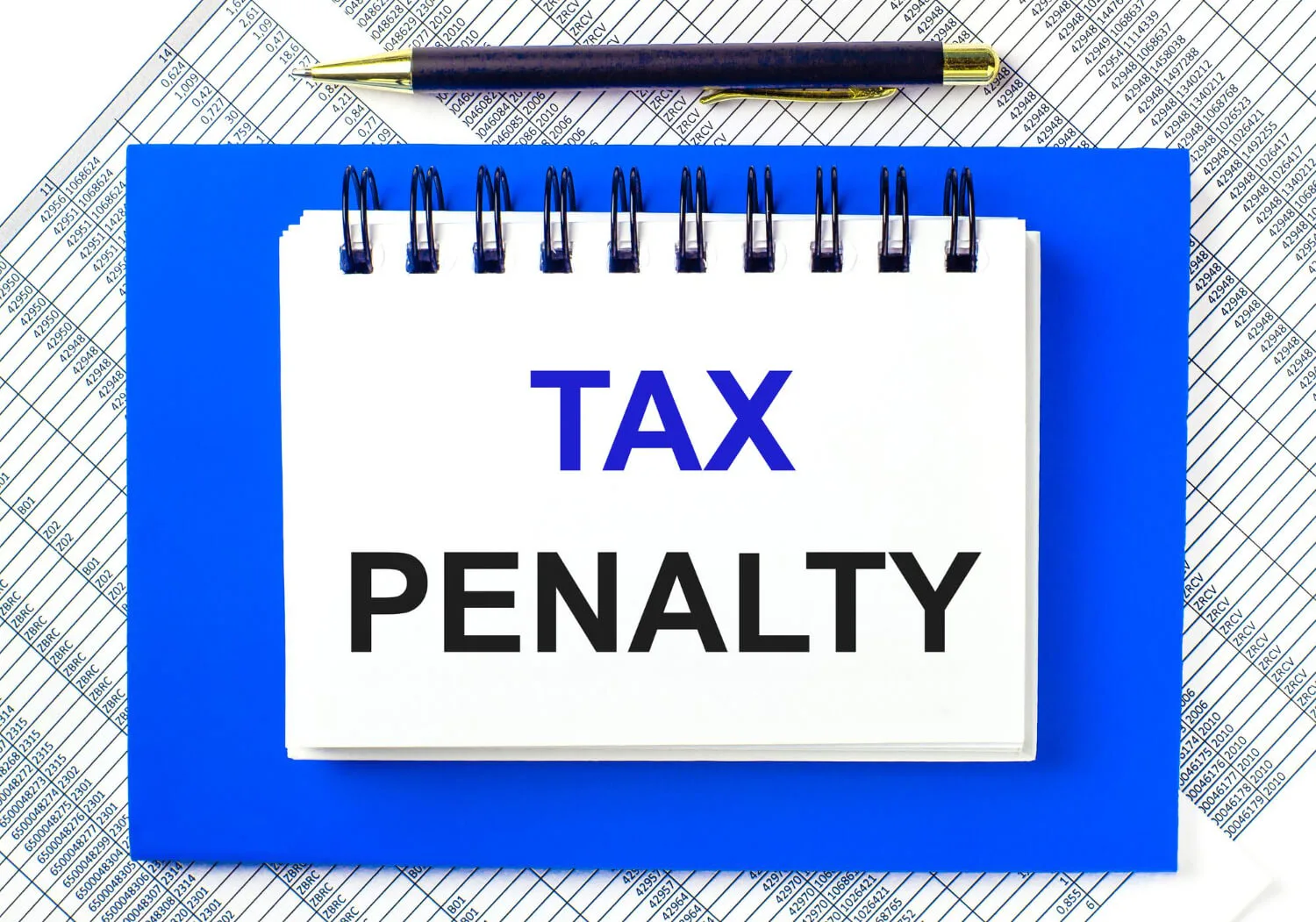Your Partner
in Legal Success
| Reading Time: 15 Minutes
What is The Concordat Process?

The concordat is regulated under Articles 285-309 of the Execution and Bankruptcy Law. Concordat aims to protect both the debtors in poor financial standing and their creditors. If a debtor and a creditor agree on a concordat, the debtor clears their debts by paying the debt in line with the agreement stipulated under the concordat. Therefore, a concordat process may be defined as a reconstruction agreement between the debtor and the creditors.
The concordat is an agreement that even if some creditors do not take part or agree to the concordat, it will be binding upon them. Therefore, to have a concordat, two different quora of creditors and the amount of debt must be agreed upon. Within this scope, the validity of a concordat is subject to the approval of one-half of the creditors whose receivables exceed two-thirds of the debtor’s total debt.
In Article 4 of the Decree-Law No. 669 published on 31.07.2016, within the scope of the state of emergency, the corporations are required to postpone the bankruptcy proceedings, and the decision to postpone the bankruptcy proceedings is prevented. The concordat has come up again. Amendments have been in terms of the concordat process, within this scope, the Law on Enforcement and Bankruptcy Law published in the Official Gazette dated 15.03.2018 and the Law on Amendment in Some Laws.
What Are The Types of Concordat Processes?
What is The Ordinary Concordat Process?
Any debtor who can not pay their debts on term or is in danger of not being able to pay their debts on term may ask for a concordat process to ask for a term or pay their debts with a discount or to get rid of possible bankruptcy.
Any creditor who can ask for bankruptcy may demand (in our legislation, the situation of stock companies’ assets are more than their debts, which is listed as a special reason for a bankruptcy) the commencement of the debtor’s concordat process by justifiable petition.
According to the previous regulation, this request was submitted to the Enforcement Courts by adding a list indicating the status of the company books required to be kept. The obligation to add a list has been repealed in the light of Amending the Enforcement and Bankruptcy Law and Certain other Laws.
The competent and authorized authority for debtors subject to this claim is the debt enforcement office in the vicinity of the debtor’s procedure center. For debtors who are subject to bankruptcy, the debt enforcement office is in nearby of the procedure center of the debtor; for the commercial enterprises which have abroad located centers, the branch in Turkey, if there is more than one branch, the debt enforcement office at the location of the main branch; and lastly is the basic commercial court in settlement of the debtor who is not subject to the bankruptcy are competent for the commencement of the concordat procedure.
The ordinary concordat process is how the debtor can apply before it is decided to go bankrupt. First, one of the debtors or creditors who can ask for bankruptcy applies to the enforcement court with a petition and offers a concordat project showing how to pay the debts. The debtor also must include a detailed balance sheet and a table of income and expenses for its project. If the enforcement court finds that the conditions of the concordat process are met, it shall immediately issue a temporary respite decision of no more than three months.
The term “concordat respite” was changed to “temporary respite” in the previous regulation. Suppose one of the creditors has requested the commencement of concordat transactions. In that case, a temporary respite decision will be decided if the debtor provides the necessary documents completely and within the reasonable time that the court will give. The creditor will pay the expenses required to prepare the mentioned documents and records in this situation. If the documents and records are not submitted completely during this time, the temporary respite will not be decided, and the concordat request made by the creditor will also be rejected. Acceptance of a temporary respite request, the appointment of a temporary commissioner, the extension of a temporary respite, and decisions regarding measures can not be appealed.
The concordat process provides an opportunity to benefit from the provisions of the concordat to a debtor who acted with integrity in their works and acted diligently. However, whose financial condition has been impaired, because there is no executive proceeding against the debtor, the debtor can make a concordat with their creditors during this period. The conditions for a respite decision are the possibility of the success of the concordat process and the absence of the intention to damage the debtor’s creditors.
The enforcement court examines the debtor’s proposal according to the simple trial procedure. The executive court listens to the debtor and creditor if the creditor demands. At the end of the review, if the court finds that the necessary conditions do not exist, the court rejects the request.
If the court finds the circumstances exist, it accepts the request and appoints one or more concordat commissioners. The Commissioner invites the creditors to the meeting and decides whether or not the final voting consent is acceptable. More than half of the creditors and two-thirds of the receivables are sought. Upon acceptance of the concordat process by the creditors, the concordat process will be presented to the commercial court.
If the commercial court confirms the concordat process, it generates its provisions and conclusions. If the debtor starts to pay off their debts in concordat process terms and the discount concordat is issued, the debtor’s debts will be finished.
Confirmation Conditions of The Concordat Process: The declared amount shall be proportional to the debtor’s resources. In the asset abandonment concordat, the proceeds obtained in the event of conversion into money or the sum offered by the third party shall be more than the amount that can be obtained in case of liquidation by bankruptcy, the concordat shall be accepted with the necessary majority, adequate collateral has to be provided for the anticipated receivables, and the charges and expenses must be stored for confirmation.
Enforcement can not be executed against the debtor within the temporary respite; previously started enforcement execution will stop, and the cuttable statute of limitations and the rights do not proceed. Decisions on cautionary judgment and provisional seizure of the debts will be inapplicable.
Starting enforcement by converting the pledge to money proceedings may be initiated, or the initiated proceedings may be continued. Still, protective measures can not be taken, and pledged goods can not be sold.
The savings of the debtor are limited within the respite. Apart from the consent of the enforcement court, pledges and mortgages can not sell the immovable property and can not transfer, restrict or guarantee any part of the permanent installation of the operation. Contracts prepared and signed for these are null and void.
The court removes the respite if the debtor does not behave in good faith or comply with its obligations. Within ten days after the announcement of the decision, each of the creditors may request the debtor’s bankruptcy, even if the debtor is not subject to bankruptcy.
The concordat process, confirmed and entered into force by the court, is compulsory for all the creditors who became creditors before the respite decision or without the Commissioner’s consent. Pledged receivables and government receivables listed under article 206/1 are exceptional.
What Are The Documents That Will be Added to The Concordat Request?
The debtor shall attach the following documents to the concordat;
a) Pay at what rate of the debt or on which term, in what amount creditors would be decided not to execute enforcement, whether the debtor sells their existing property of their to make payments, to continue the activities of the debtor and creditors through a capital increase or loan provision or another method to provide necessary financial resources to make the payment or will be provided using concordat pre-project is required.
b) Documents showing the status of the properties of the debtor are as follows; if the debtor has the responsibility to keep a book, the last balance sheet, income statement, and cash flow statement prepared in accordance with the Turkish Commercial Code, the intermediate balances prepared based on the continuity of the operation and the possible sale prices of the assets, the opening and closing approvals of commercial books and the electronically conducted books, other information, and documents explaining the financial situation of the debtor, belongs to tangible and intangible assets, lists with book values, lists and documents showing all receivables and debts together with the balances.
c) The list of creditors, receivable amounts, and the receivable’s privileged status is required.
d) According to the pre-concordat project proposals, a table showing the prescribed amount in the hands of the creditors can be passed into the hands of creditors in case of bankruptcy of the debtor.
e) The financial analysis reports and the supporting documents prepared by the independent audit firm authorized by the Capital Markets Board or the independent auditing firm authorized by Accounting and Auditing Standards Authority and showing that the proposal in the pre-concordat’s possibility to happen is high. This requirement shall not apply to small businesses within the scope of Article 28 of the Decree-Law on the Organization and Duties of the Ministry of Science, Industry, and Technology No. 635 dated 3/6/2011.
- The date of the financial statements submitted pursuant to this article has to be presented no later than forty-five days before the date of application.
- The Borrower shall also submit other documents and records which may be requested by the court or the Commissioner in the concordat process.
What is Temporary Respite?
Upon the concordat request, the court immediately decides the temporary respite when it finds that the documents specified in Article 266 of the Execution Bankruptcy Law are completely available. The court takes any measures to protect the debtor’s assets, including the situations listed under Article 297 (“Debtor can not establish a pledge, guarantee, guarantee, immovable property and the permanent installation of the operator, in part, even if it is not allowed by the court. Otherwise, the transactions will be invalid. The court must ask for the view of the Commissioner and the creditors’ board before giving a decision.“)
Suppose the commencement of concordat procedures is requested by one of the creditors. In that case, a temporary warrant is issued in the event that the debtor delivers the documents and records referred to in Article 286 completely within the reasonable time provided by the court. The creditor covers the expenses required to prepare the mentioned documents and records in this situation. Suppose the documents and records are not submitted completely and not in time. In that case, the temporary respite will not be decided, and the concordat request made by the creditor will be rejected.
The court shall appoint a temporary concordat commissioner to closely examine whether concordat is possible to reach success within temporary respite. Three commissioners may be appointed when necessary depending on the creditor number and the number of receivables. Article 290 applies to this situation comparatively.
The temporary respite is three months. The court may extend the temporary respite by no more than two months upon the request of the debtor or temporary Commissioner before the expiration of this period of three months. If the debtor has requested the extension, the temporary Commissioner’s view has to take the total duration of the temporary respite may not exceed five months. Articles 291 and 292 are applied comparatively on temporary respite. The law cannot use it to accept temporary respite, appoint a temporary commissioner, or extend temporary accords, and it cannot be appealed.
Temporary Respite Results, Declaration, and Notification
Temporary respite generates the results of the peremptory term.
Temporary respite decision announces by the court on the Trade Registry Gazette and Press Association Authority declares on the official announcement portals and notifies the directorate of land registry, the trade registry directorate, tax offices, customs, and postal administrations, Turkey Banks Union, Turkey Participation Banks Union, the local chambers of commerce, chambers of industry, to the movable stock exchanges, to the Capital Markets Board and other necessary places.
Declaration also states that creditors may want to reject concordat from the court with the petition within seven days of the exact time from the announcement and argue that there is no evidence showing requiring a temporary respite.
Court declares and notifies concerned authorities about decisions related to the extension of the temporary respite and removal of the temporary respite.
What is Peremptory Respite?
The court gives its decision on the peremptory respite during the temporary respite. In order to decide on the peremptory respite, the court invites the debtor, and if it exists, the creditor who is demanded the concordat. The interim Commissioner provides a written report before the hearing, and if the court assumes it necessary, the Commissioner will be present at the hearing to give their statement. The court will consider the reasons in a petition of the objecting creditors while evaluating.
If it is understood that the concordat can succeed, the debtor takes a one-year peremptory respite. With this decision, the court decides to temporary commissioners or commissioners to continue their duty if there is no need for a new assignment and gives the case file to the Commissioner.
The court may compose a creditors council limited by seven creditors at a time deemed appropriate by the decision within peremptory respite and any fees to determine. Also, the Council has to be in a single number. In this case, the creditors differ in legal character; if so, pledged creditors are represented fairly on the Creditors’ Council.
When the Creditors’ Council is established, the Commissioner’s view also is taken. The Council of Creditors convenes at least once a month and decides by a majority of votes. The Commissioner shall be ready at the meeting, and at this meeting, the Commissioner takes the attendants’ signatures to write to report. Considering the number of creditors, the number of receivables, and the diversity of receivables, the cases in which the creditor’s counsel is compulsory to be established, and other matters related to the Creditors’ Council indicates in the regulations put into effect by the Ministry of Justice.
In exceptional circumstances where difficulties exist, the court may extend the peremptory respite to six months on a justified report explaining this situation and request by the Commissioner.
The debtor may also request an extension under this paragraph; in this case, the Commissioner also gives a view. In both cases, the extension request is made before the peremptory respite is issued and before the extension decision is made, if any, the Council’s opinion has to be taken.
Decisions regarding peremptory respite, the extension of the peremptory respite, and the concordat request’s rejection shall be announced per Article 288 and notified to the relevant authorities.
What is Concordat After The Bankruptcy?
A person who has decided to go bankrupt can offer a concordat to remove this bankruptcy decision. This right is only known to the bankrupt debtor. A concordat offer may be made between the opening of the bankrupt’s estate and the exact distribution of the money. There has to be a possibility that the debtor will be successful, and there should be no intent to harm the creditors. The debtor must also offer a payment proportional to its resources.
Bankrupt gives the concordat project to the bankruptcy office during the bankruptcy liquidation. The bankrupt does not have to add a detailed bill, an income table, and their books’ status to this project.
The Concordat process after the bankruptcy does not provide a temporary respite, and a commissioner can not be appointed. Liquidation proceedings continue until the second creditors meeting. However, the conversion of the assets to money stops with the concordat offer until the confirmation of the commercial court on concordat. However, this period is limited to six months.
The decision on the confirmation of the concordat by the second meeting of creditors will be submitted to the commercial court, which gave the bankruptcy decision with the confirmation of request by the administration of bankruptcy. The commercial court shall examine and certify the terms of confirmation. When the decision is confirmed, the court notifies the bankruptcy administration. The bankruptcy administration also requests that the bankruptcy be removed from the commercial court that made the decision. If the commercial court rejects the request, the bankruptcy proceedings continue to liquidate. However, if the commercial court accepts this request, it will remove the bankruptcy.
What is The Concordat Through Asset Abandonment?
In the concordat asset abandonment procedure, the debtor authorizes the creditors to dispose of these assets or transfer all or a portion of these assets to a third person. In this way, the creditors collect their receivables by liquidating the debtor’s assets.
Creditors may choose liquidation officers, but after the Enforcement Court approves the selected person, the disposal authority transfers to the creditors and liquidation officers. Liquidation officers dispose of the debtor’s assets in a manner similar to the procedure in bankruptcy liquidation and distribute the obtained money to the creditors.
The provisions of the ordinary concordat apply to the concordat through asset abandonment, as long as it does not contradict the nature of the work. Concordat through asset abandonment is a liquidation process that protects the creditor against being unable to collect their receivables and protects the debtor against the risk of selling assets at low prices.
Concordat Commissioner and Council of Creditors and Their Duties
According to article 290 of the Enforcement and Bankruptcy Law, the Commissioner who receives the file shall return the file to the court together with the report by completing the procedures for certifying the concordat within the peremptory respite. The Commissioner’s duties are:
- Contributing to the completion of the concordat project.
- Supervising the activities of the debtor.
- Performing the duties which are given by this law.
- Providing interim reports that the issues asked by the court and at the appropriate time.
- Informing the Council of Creditors at regular periods about the progress of the concordat.
- Giving information about the concordat’s status and the debtor’s current financial situation.
- Fulfilling other duties given by the court.
What Are The Confirmation Conditions of The Concordat Process?
According to Article 305 of the Enforcement and Bankruptcy Law; the confirmation of the concordat project, which is agreed upon at the meeting of creditors and in the accession period, depends on the fulfillment of the following conditions:
- Understanding that the amount offered in the ordinary concordat will be more than the potential amount to be in the hands of the creditors in the case of the debtor’s bankruptcy; understanding that the revenue obtained in the event of the convert to money in concordat through the abandonment of the asset or the amount offered by the third person has to be more than the amount that can be obtained in liquidation by bankruptcy.
- The proposed amount has to be proportional to the resources of the debtor.
- The concordat project has to be accepted by the majority, as foreseen in Article 302.
- The payment of the receivables of the privileged creditors on the first row of Article 206 and the performing of the debts contracted with the Commissioner’s consent within the time limit shall be deposited adequately unless the creditor expressly abandons it.
- Costs have to be paid for the confirmation of the concordat, and expenses from the determined amount to be paid to creditors must be deposited before the confirmation decision. If the court finds that the concordat project is inadequate, it may ask to make the correction it deems necessary by itself or upon request.
The Decision of Confirmation, Scope, and Declaration of Concordat
It states in the confirmation decision of the concordat to what extent the creditors will waive from their receivables and in what period the debtor will pay their debts. The decision may consist of the necessary monitoring to ensure the fulfillment acknowledged by the concordat appointment of a trustee to take the measures on liquidation and management.
In this case, the trustee reports to the court, which gives the confirmation decision, once in two months, about the situation of the debtor’s operation and the ability to pay the debt; creditors can review this report. The court announces a decision of confirmation and notifies the relevant authorities.
Retention and Sale of The Pledged Goods and Deferral of Retail of Goods For Financial Leasing Issues
Upon the request of the debtor, the retention and sale of the pledged goods may be delayed for a period not exceeding one year from the date of the decision according to the following conditions:
- The receivable provided with the pledge must exist before the concordat request.
- The receivable provided with the pledge shall not have an unpaid interest until the date of the concordat request.
- The debtor must have proved that the pledged asset is necessary for the operation. In converting the pledged asset to money, their economic situation would be in danger. In case of delay in retaining the pledged property and then convert into money, the time to ask for a sale will be stopped.
Upon the request of the debtor, retail of the matter of financial leasing goods may be delayed for not more than one year from the date of the decision according to the following conditions:
- The debtor has to fulfill the lease agreement under the seventh paragraph of Article 294.
- The rent arising from the financial lease agreement has to be existing before the concordat request.
- Unpaid rent should not exceed the three months amount.
- Because of this delay, the loss that may arise from the value loss of the financial leasing asset should be secured.
- The debtor should have approximately proved that the financial lease-issued asset is necessary for the operation and that their economic existence would be jeopardized if it had been retailed. The creditors listed under the first and third paragraphs are invited to submit their written opinion regarding the confirmation of the concordat before the hearing; these creditors are also invited to the hearing. Delayment will be void if the debtor transfers the pledged or leased property with their consent or bankrupt or die. The court confirmed the concordat should remove the delayment decision upon the creditor’s request by inviting the debtor if it can provide the existence of one of the following circumstances approximately.
- If the debtor has obtained the delay by giving false information.
- If the wealth and income of the debtor have increased, the debtor will be able to pay the debt without jeopardizing their economic asset.
- If the conversation of the pledged assets to money or the retail of the leased property does not jeopardize the debtor’s economic existence.
Unapproved Concordat and The Debtor’s Bankruptcy
If the concordatatum is not approved, the court rejects the concordat request, and this decision is declared and notified to the concerned authorities. If the debtor is from persons subject to bankruptcy, and if one of the reasons for direct bankruptcy exists, the court decides itself to the debtor’s bankruptcy.
The debtor or creditor offered concordat can appeal this decision for ten days from notification of the decision. Objecting creditors can appeal this decision for ten days from the decision declaration. An appeal may be filed within ten days against the decision of the regional courts of justice. Investigations of appeals are made according to the Code of Civil Procedure provisions.
What Are The Differences From Suspension of Bankruptcy?
The suspension of bankruptcy with the new regulation. In this case, debtors benefit from concordat as the easiest possibility to collect the receivables. Debtors’ benefit is a chance to continue their commercial activities, and creditors’ benefit is a chance to collect their receivables.
The company, which is in the state of being protected against the enforcement within the suspension of bankruptcy, will be able to conclude a concordat in this way or make necessary preparations for the reconstruction of the debts through reconciliation or forensic concordance.
The main purpose of the suspension of bankruptcy is to ensure the protection of the company’s active assets. For this reason, the court has the authority to “take all necessary measures to protect the property of the company or cooperative” (Enforcement and Bankruptcy Law Article 179/1 first line). For protecting the company’s assets by suspension of bankruptcy;
- Improvement,
- Concordat,
- Reconstructing debt through compromise,
- Limiting operating expenses,
- Increase capital,
These are ways to apply.
Suspension of bankruptcy and concordat are institutions that are applicable for saving the capital company, besides that suspension of bankruptcy is applicable only for capital companies made notification as going into debt by article 324 of the Turkish Commercial Code; “According to the legislative intent of article 376 of Turkish Commercial Code, “go into debt” means, creditors can not collect their receivables not only evaluated as company’s active assets -as in annual balance sheet- book (acquisition), even for the real (potential sale value) valuation“.
However, such a condition is not sought in order to be able to apply concordat. Giving a temporary respite requires that the bankruptcy deadline expire; suspension of bankruptcy does not exist if temporary respite exists.
Suspension of bankruptcy might not end with concordat (with reconstruction by conciliation). The company’s situation can improve by suspending bankruptcy without concordat (without reconstruction by conciliation).
When evaluating in terms of procedure, bankruptcy suspension, the need for a balance sheet, and an improvement project. Concordat requires only the existence of a duly concordat project.
Concordat is an opportunity open to everyone, like capital companies, real person commercial businesses, and real people.
However, suspension of bankruptcy is only a way for capital companies and cooperatives to apply. Nevertheless, according to the Supreme Court of Appeal and some doctrines, banks can not apply for a suspension of bankruptcy, notwithstanding the banks that are joint-stock companies.
Both the concordat and suspension of bankruptcy may allow for correcting a debtor’s financial situation. However, suspension of bankruptcy is available only for the debtor whose passive assets are more than active. The debtor can apply this way only when they are deep in debt; concordat applies to debtors who are incapable of paying their debts.
Related Articles:
- Overdue Difficulty and Adaptation Cases Under Article 138 of The Code of Obligations,
- Information Note on Enforcement of EU Countries’ Court Judgements in the Republic of Turkey,
- Practical Guidance on Establishment of Asset Management Companies and Obtaining Final Activity Permit in The Republic of Turkey,
- Foreign Court Decisions in Turkey: Recognition and Enforcement.



